Many businesses face a common problem. They have a great product or service, but they struggle to build a brand that feels consistent and memorable. Their marketing messages feel disconnected, their visual style changes too often, and they fail to make a real, lasting impression on their audience. In a crowded marketplace, being forgettable is a critical failure. The solution isn’t just a new logo or a catchy tagline. The solution is to build a brand with a clear, authentic, and relatable identity. This is where a powerful framework known as brand personality archetypes comes into play.
The concept of brand personality archetypes is a system for understanding your brand as a character in a story. Rooted in proven psychology, it gives you a blueprint for understanding what your brand stands for, how it should communicate, and how it can connect with customers on a deep, emotional level. These are not just simple labels; they are strategic tools based on universal patterns of human motivation that everyone, everywhere, instinctively understands.
This article will provide a complete breakdown of the 12 brand personality archetypes. More importantly, it will give you a data driven process for discovering which one fits your business and how to use it to build a stronger, more successful brand that stands out from the competition.
The Foundation: What Are Brand Archetypes and Why Are They Critical for Business?

To effectively use this system, you must first understand what it is. A brand archetype is a symbolic character that represents a basic human desire or motivation. Think of the classic characters you see in movies and books, like the brave hero, the wise mentor, or the funny sidekick. You instantly understand who they are and what drives them. Brand personality archetypes apply these same timeless character models to businesses. When a brand consistently behaves like a specific archetype, customers begin to see it as more than just a company; they see it as a personality they can know, trust, and relate to.
It is important to understand the difference between a brand’s personality and its archetype. Think of the archetype as the skeleton or the blueprint. It’s the deep, underlying structure. Brand personality is the skin, clothes, and voice. It’s the set of human traits you use to bring that underlying structure to life. For example, two brands might both use the Hero archetype as their foundation, but one might have a personality that is aggressive and competitive, while the other is compassionate and protective. The core motivation is the same, but the expression is unique. Using brand personality archetypes ensures that the personality you build is consistent and meaningful.
The origin of this powerful idea comes from the work of a famous Swiss psychiatrist named Carl Jung. He was a pioneer in the early 20th century who developed the theory of the “collective unconscious.” This sounds complex, but the idea is simple. Jung believed that all humans, regardless of culture or background, share a collection of innate, universal symbols and stories.
These are the archetypes. They are hardwired into our minds. Decades later, two authors, Margaret Mark and Carol S. Pearson, wrote a groundbreaking book called “The Hero and the Outlaw.” This book took Jung’s psychological theories and applied them directly to modern business and marketing. They showed how the most successful and enduring brands in the world were already using brand personality archetypes to dominate their markets.
So, why do archetypes matter for your business? In today’s noisy world, using brand personality archetypes is a strategic necessity. First, it creates powerful consistency. When you know your archetype, every decision, from the colors on your website to the tone of your social media posts, becomes easier. Everything works together to tell the same story. Second, it forges a real connection. People don’t form relationships with products; they form relationships with personalities.
By tapping into these deep, universal human patterns, you create a subconscious bond with your target audience. They don’t just buy from you; they believe in you. Finally, this framework provides a clear path to differentiation. It allows you to find your unique space in the market and own a specific narrative, making you the obvious choice for customers who share your brand’s worldview. The proper use of brand personality archetypes can transform your business from just another option into the only option.
The 12 Brand Personality Archetypes: A Complete Analysis
The framework is built around twelve primary archetypes. Each one has a distinct set of characteristics, motivations, and goals. They are often organized into four groups based on their core driving force: Stability, Belonging, Independence, and Mastery. Understanding all 12 brand personality archetypes is the key to finding the one that truly represents your brand’s soul.
Group 1: Stability & Control
These archetypes are driven by the desire to provide structure, safety, and control to the world. They are often seen as pillars of society.
1. The Creator
The Creator is the artist, the innovator, and the inventor. This archetype’s core desire is to create things of enduring value and beauty. They are imaginative, expressive, and have a deep fear of mediocrity. Creator brands empower their customers to be creative and express their own unique vision. Their marketing focuses on innovation, craftsmanship, and the beauty of self expression. They celebrate the process of making something new and inspire others to unlock their own potential. When considering brand personality archetypes, the Creator is a powerful choice for businesses in design, technology, and the arts.
- Core Desire: To create things of enduring value.
- Brand Voice: Imaginative, inspiring, and artistic.
- Brand Examples: Apple, LEGO, Adobe. Apple doesn’t just sell technology; it sells tools for creation. LEGO doesn’t just sell plastic bricks; it sells infinite possibility.
2. The Caregiver
The Caregiver is the altruist, the parent, and the helper. The core motivation for this archetype is to protect and care for others. They are compassionate, generous, and nurturing. Their greatest fear is selfishness and ingratitude. Caregiver brands build trust by being dependable, supportive, and consistently putting the customer first. Their marketing is often warm and emotional, focused on the feelings of safety, security, and care they provide. This is one of the most resonant brand personality archetypes for industries like healthcare, non profits, and any service focused on helping people.
- Core Desire: To protect and care for others.
- Brand Voice: Warm, reassuring, and gentle.
- Brand Examples: Johnson & Johnson, TOMS, UNICEF. These brands are built on a foundation of compassion and a promise to make the world a better, safer place.
3. The Ruler
The Ruler is the leader, the boss, and the role model. Driven by the desire for control and order, the Ruler archetype creates stability and prosperity by taking charge. They are responsible, organized, and confident. Their biggest fear is chaos and being overthrown. Ruler brands promise quality, leadership, and security. They often position themselves as the premium, high end choice in their category. Their marketing is authoritative and speaks of tradition, exclusivity, and success. They appeal to customers who want to feel successful and in control.
- Core Desire: To create a prosperous, successful family or community.
- Brand Voice: Commanding, refined, and confident.
- Brand Examples: Mercedes Benz, Rolex, Microsoft. These brands are leaders in their field and project an aura of power, control, and lasting quality.
Group 2: Belonging & Enjoyment
These archetypes are motivated by the desire to connect with others, fit in, and simply enjoy life. They are down to earth and relatable.
4. The Jester
The Jester is the comedian, the trickster, and the entertainer. The Jester’s mission is to live in the moment and enjoy life to the fullest. They love to play, make jokes, and bring people together through fun. They are playful, optimistic, and spontaneous. Their greatest fear is being boring. Jester brands are all about entertainment and fun. They are not afraid to be silly or irreverent. Their marketing often uses humor to connect with their audience and make their products memorable. They appeal to the young and the young at heart.
- Core Desire: To live in the moment with full enjoyment.
- Brand Voice: Playful, humorous, and optimistic.
- Brand Examples: Old Spice, M&M’s, GEICO. These brands use humor and wit to stand out and create a fun loving brand personality.
5. The Everyman / Everyperson
The Everyman, also called the Everyperson, is the friend, the neighbor, and the solid citizen. This archetype has a deep need to belong and connect with others. They are humble, authentic, and empathetic. They don’t want to stand out; they want to fit in. Their biggest fear is being left out or appearing snobbish. Everyman brands are friendly, unpretentious, and reliable. They project an image of honesty and practicality. Their marketing emphasizes shared values and a sense of community. This is one of the most common brand personality archetypes for everyday products.
- Core Desire: To connect with others.
- Brand Voice: Friendly, humble, and authentic.
- Brand Examples: IKEA, Target, Budweiser. These brands feel familiar and comfortable, like a trusted friend you can always count on.
6. The Lover
The Lover archetype is all about creating intimacy and experiencing sensual pleasure. This archetype wants to be in a relationship with the people, work, and surroundings they love. They are passionate, committed, and appreciative. Their fear is being alone or unwanted. Lover brands are focused on creating beautiful experiences that indulge the senses. They foster connection and make their customers feel special and attractive. Their marketing is often sensual, elegant, and focused on emotion. This archetype is common in cosmetics, fashion, and luxury food.
- Core Desire: To attain intimacy and experience sensual pleasure.
- Brand Voice: Passionate, sensual, and intimate.
- Brand Examples: Victoria’s Secret, Godiva Chocolate, Chanel. These brands appeal to our desire for beauty, romance, and indulgence.
Group 3: Independence & Fulfillment
These archetypes are driven by a desire for paradise, self discovery, and understanding the world on their own terms.
7. The Innocent
The Innocent is the optimist, the dreamer, and the romantic. This archetype’s core desire is to be happy and to experience paradise. They see the good in everything and everyone. They are honest, pure, and hopeful. Their greatest fear is doing something wrong that will be punished. Innocent brands have a simple, positive message. They promise goodness, simplicity, and nostalgia. Their marketing is often clean, wholesome, and straightforward, evoking a sense of trust and security.
- Core Desire: To get to paradise.
- Brand Voice: Sincere, optimistic, and honest.
- Brand Examples: Coca Cola, Dove, Nintendo. These brands connect with our inner child and our desire for a simpler, happier world.
8. The Explorer
The Explorer is the adventurer, the pioneer, and the wanderer. Driven by a powerful desire for freedom and discovery, the Explorer wants to experience a more authentic and fulfilling life. They are independent, ambitious, and love a challenge. Their biggest fear is conformity and feeling trapped. Explorer brands are rugged, adventurous, and celebrate individualism. They encourage their customers to push boundaries and discover the world, and themselves, in the process. Their marketing is often filled with inspiring images of nature and exploration.
- Core Desire: The freedom to find out who you are through exploring the world.
- Brand Voice: Adventurous, independent, and daring.
- Brand Examples: Jeep, Patagonia, The North Face. These brands are synonymous with adventure, freedom, and breaking new ground.31
9. The Sage
The Sage is the expert, the scholar, and the advisor. The core motivation of the Sage is the pursuit of truth, knowledge, and wisdom. They believe that understanding the world is the key to freedom. They are intelligent, analytical, and thoughtful. Their fear is being duped or being ignorant. Sage brands position themselves as a source of expertise and information. They build trust by sharing data, demonstrating their knowledge, and helping people make smarter decisions. Their marketing is often educational and factual. Many brand personality archetypes exist, but the Sage is key for educational and tech companies.
- Core Desire: To use intelligence and analysis to understand the world.
- Brand Voice: Knowledgeable, authoritative, and guiding.
- Brand Examples: Google, Harvard University, The Wall Street Journal. These brands are trusted sources of information and wisdom.
Group 4: Mastery & Risk
These archetypes want to leave their mark on the world through power, mastery, and revolution. They are not afraid to take risks.
10. The Hero
The Hero is the warrior, the champion, and the rescuer. The Hero is driven to prove their worth through courageous and difficult actions. They want to make the world a better place by overcoming a great challenge. They are brave, determined, and competent. Their greatest fear is weakness or giving up. Hero brands are inspiring and empowering. They challenge their customers to work harder, be better, and achieve their goals. Their marketing is often bold, confident, and focuses on triumph over adversity.
- Core Desire: To prove one’s worth through courageous acts.
- Brand Voice: Bold, confident, and inspiring.
- Brand Examples: Nike, FedEx, the U.S. Army. These brands motivate us to overcome obstacles and be the best version of ourselves.
11. The Outlaw / Rebel
The Outlaw, also known as the Rebel, is the revolutionary and the misfit. The Outlaw craves revolution and wants to disrupt the status quo. They see rules that are meant to be broken. They are rebellious, wild, and unafraid of confrontation. Their biggest fear is to be powerless. Outlaw brands challenge conventions and appeal to people who feel like outsiders. They have a raw, edgy energy and a cult like following. Their marketing is disruptive and often shocking. This is one of the more niche brand personality archetypes, but it can create intense loyalty.
- Core Desire: To overturn what isn’t working.
- Brand Voice: Rebellious, disruptive, and raw.
- Brand Examples: Harley Davidson, Virgin, Liquid Death. These brands embody a spirit of rebellion and cater to those who march to the beat of their own drum.
12. The Magician
The Magician is the visionary, the inventor, and the catalyst for change. The Magician wants to understand the fundamental laws of the universe and use that knowledge to make dreams come true. They create moments of transformation and wonder. They are charismatic, imaginative, and visionary. Their fear is unintended negative consequences. Magician brands promise transformation, turning the ordinary into the extraordinary. Their marketing is often inspiring and seems to make the impossible possible, leaving customers feeling enchanted.
- Core Desire: To make dreams come true.
- Brand Voice: Visionary, charismatic, and transformative.
- Brand Examples: Disney, Dyson, Mastercard. These brands create magical experiences and provide transformative solutions that change our perception of what is possible.
How to Accurately Identify Your Brand’s Archetype

Now that you are familiar with the 12 brand personality archetypes, the next logical step is to determine which one best fits your business. This is not a random guess; it’s a strategic process. Answering the following questions honestly will guide you to your most authentic and effective archetype.
Step 1: Analyze Your Internal Values
First, look inward at your company’s core. Forget about what you think customers want to hear for a moment. What is the fundamental reason your business exists?
- What is the mission that drives your team every single day?
- If your brand were a person, what would be its most important belief?
- What problem in the world does your product or service solve on a deeper, emotional level?
- What is the long term vision for the impact you want to make?
The answers to these questions will point you toward the core motivation that aligns with one of the brand personality archetypes. A company dedicated to making technology simpler for everyone might lean toward the Sage, while one focused on creating moments of family fun might be a Jester.
Step 2: Profile Your Target Audience
Next, you must deeply understand the people you serve. Your brand’s archetype should resonate with the core desires of your ideal customer.
- What are your customers’ biggest goals and aspirations in life?
- What are their deepest fears or frustrations?
- Which of the brand personality archetypes would they be most drawn to for the solution you provide?
- What kind of “character” do they need in their life story? Do they need a Hero to inspire them, a Caregiver to protect them, or an Explorer to guide them on an adventure?
Your brand archetype should be the character your customer needs it to be. If you sell rugged outdoor gear, your customers are likely looking for an Explorer, not a Lover.
Step 3: Assess the Competitive Landscape
Finally, analyze your competitors. Understanding how they position themselves allows you to find a unique space for your own brand.
- What brand personality archetypes do your main competitors embody? Are they all acting like Heroes?
- Is there a lot of similarity in the market? For example, are all the banks acting like Rulers?
- Where are the gaps? If everyone else is a serious Sage, perhaps there’s an opportunity for a witty Jester or a rebellious Outlaw to stand out.
This analysis is not about copying others. It’s about strategic differentiation. By choosing an archetype that is both authentic to your brand and distinct from your competitors, you create a powerful advantage. The world of brand personality archetypes offers many paths to success.
Activating Your Archetype: From Theory to Tactical Execution

Identifying your brand archetype is a major step, but it is only the beginning. The real power comes from activating it, bringing it to life in every single thing your business does. A truly archetypal brand is consistent across every touchpoint.
Brand Voice and Messaging
Your archetype should define how you speak. A Hero brand uses strong, confident, and inspiring language. It talks about overcoming challenges and achieving victory. A Caregiver brand, on the other hand, uses a warm, gentle, and reassuring voice. It talks about safety, support, and compassion. Create a brand voice guide that outlines the specific words, tone, and sentence structures that align with your archetype. This ensures that every email, blog post, and social media caption tells the same consistent story.
Visual Identity
Your visuals must also reflect your archetype. This goes far beyond just your logo. It includes your color palette, typography, photography style, and overall design aesthetic. A Ruler brand might use deep, rich colors like navy and gold, with classic, authoritative fonts to project power and stability. An Innocent brand would use bright, clean colors and simple, rounded fonts to communicate honesty and optimism. Your visual identity is a powerful, non verbal way to communicate the essence of your brand personality archetypes.
Content Marketing & Storytelling
Your archetype is the main character in your brand’s story. Use it to guide your content strategy. An Explorer brand should create content about travel, adventure, and personal discovery. This could be blog posts about hidden gems, videos of expeditions, or customer stories about their own journeys. A Sage brand should produce educational content like in depth guides, data-driven reports, and expert interviews. The goal is to create content that your ideal customer finds valuable because it aligns perfectly with the worldview of your shared archetype.
Conclusion: Using Archetypes as a Compass, Not a Cage
The framework of brand personality archetypes offers an incredibly powerful system for building a brand that is consistent, memorable, and deeply connected to its audience. By moving beyond just what your business sells and defining who your business is, you transform it from a simple commercial entity into a meaningful character in your customers’ lives. This guide has broken down the core principles, detailed the 12 primary brand personality archetypes, and provided a clear process for identifying and activating your own.
Remember, however, that your archetype should be a compass, not a cage. It is a strategic tool meant to provide guidance and ensure authenticity, not a rigid set of rules that stifles creativity. The most compelling brands often have a primary archetype supported by a secondary one, which adds depth and nuance to their personality. The ultimate goal is to use this framework to build an authentic brand that truly reflects your values and resonates with the people you are meant to serve. Begin the process today. Analyze your values, understand your audience, and start building a brand that will stand the test of time.







